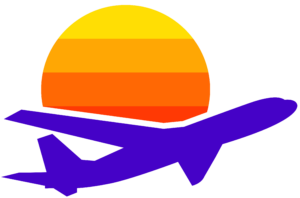The U.S. airline industry is slated for a period of transformation in the coming year. As low-cost airlines strive to regain their financial footing, major carriers aim to consolidate their gains at the expense of smaller rivals. While full-service, global airlines have recorded healthy profit margins, ultralow-cost carriers (ULCCs) have faced setbacks, signaling a reversal from pre-pandemic times. This critical analysis delves into the factors driving this shift and the potential challenges and opportunities the industry faces moving forward.
Traditionally, low-cost airlines have outperformed major carriers in terms of profit margins. However, recent results show that the success of global carriers can be attributed to strong international and premium demand. On the other hand, low-cost carriers have been impacted by soft domestic demand among budget travelers. It remains unclear whether this shift is a long-term trend or merely a blip in the industry. Ronan Murphy, a director at Alton Aviation, suggests that full-service airlines’ revenue driver, premium cabins, may not be sustainable. Furthermore, discount carriers must moderate their growth to return to profitability, challenging their historically fast expansion-based business models.
The foreseeable future is likely to see full-service carriers outperforming more leisure-oriented airlines, such as Southwest. Brad Beakley, CEO of Hospitio, emphasizes that Southwest no longer enjoys the cost advantages it once had relative to the major carriers. Additionally, Southwest’s reputation took a major hit during its operational collapse over the 2022 holiday season. However, the potential game-changer in the industry could be a Spirit-JetBlue merger, if approved. Beakley suggests that this merger would provide breathing room for other ULCCs, potentially altering the competitive landscape.
The ULCC sector faces significant challenges as a result of changing market dynamics. Frontier, which had previously sought to acquire Spirit but lost to JetBlue, may no longer be interested in pursuing market consolidation. Speculation remains about Spirit’s next move if the proposed merger with JetBlue is blocked. Analysts and industry observers are also keeping a close eye on the potential merger between Hawaiian Airlines and Alaska, waiting to see how competition regulators will view the deal.
One of the most significant industry developments in 2023 was the growing push by airlines to move towards NDC (New Distribution Capability) acceptance. American Airlines spearheaded this effort and is now withholding the majority of its fares from corporate booking tools that are not NDC-enabled. However, the adoption of NDC by travel management companies (TMCs) has been relatively slow, with only about 2% of corporate tickets booked through a travel agency being done via NDC technology. Garner, an analyst at Garner consultancy, predicts that American will take its case directly to corporate travelers in an effort to drive an increase in direct bookings.
American Airlines has been aggressively pushing its NDC strategy, aiming to shift sales away from legacy Edifact GDS (Global Distribution System) technology. However, airlines like American might lose patience with TMCs’ reluctance to adopt NDC due to incentives received from legacy GDS bookings. The future seems to entail American making stronger moves to incentivize direct bookings by corporate travelers. Garner suggests that the airline will focus on aligning status benefits with direct bookings through enhanced status accrual benefits and targeted marketing initiatives.
As the U.S. airline industry moves into the future, key players are grappling with changing dynamics and an evolving competitive landscape. While major carriers consolidate their gains, low-cost airlines face challenges and the potential need to redefine their business models. The industry is also witnessing a shift towards NDC acceptance, driven by American Airlines, and the success of this initiative depends on the willingness of travel management companies to adopt the new technology. Despite uncertainties and hurdles, the future of U.S. airlines holds potential for innovation, growth, and enhanced customer experiences.

